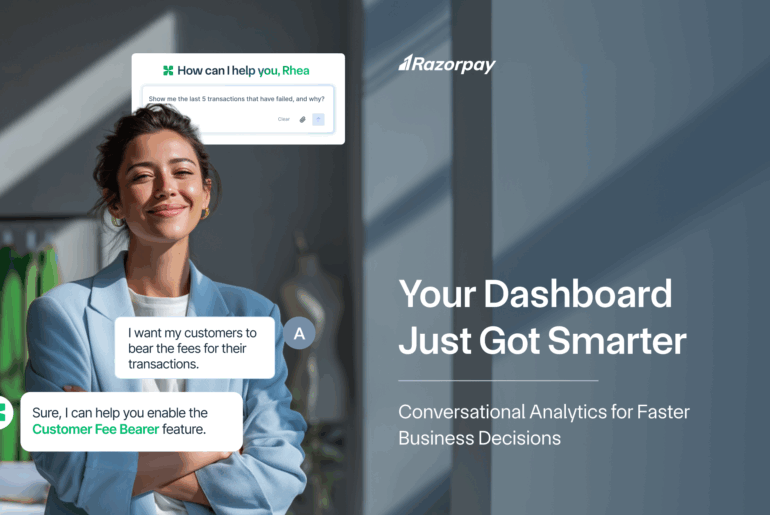Running an offline retail business comes with its fair share of challenges. Every day, you’re faced with important decisions—keeping up with emerging technologies, staying ahead of competitors, responding to shifting customer preferences, and navigating complex government regulations. Amid all of this, choosing the right payment solution can feel overwhelming, especially with so many options available. That’s where this blog comes in—to help you choose between a UPI Soundbox and QR Code for your business.
Table of Contents
What payment options are available to you?
When it comes to payment solutions for retail businesses, two great options stand out: the UPI Soundbox and the QR Code Sticker.
Here’s how the two differ:
- QR Code Sticker: A printed code that your customers scan using their UPI app to make payments directly to your account.
- UPI Soundbox: A device that gives you instant voice notifications for every successful payment, ensuring seamless transaction tracking and reducing confusion.
Which one is better for your business?
Here’s a set of six questions to help you determine which payment tool aligns better with your business nature:
1. Do you have high footfall and numerous transactions throughout the day, or is it a slower-paced business?
- UPI Soundbox: Best suited for fast-paced businesses with high footfall and frequent transactions, like grocery stores, pharmacies, or quick-service restaurants.
- QR Code Sticker: Ideal for slow-paced businesses with fewer daily transactions, such as boutique shops, salons, or specialty stores.
2. Is the average amount per transaction high?
- UPI Soundbox: A great option for businesses handling high-value transactions, such as electronics stores or furniture outlets, where clear payment confirmation is crucial.
- QR Code Sticker: Better for businesses with low to mid-value transactions, like cafés, street vendors, or small retail shops.
3. How much are you willing to spend on a payment tool?
- UPI Soundbox: Suitable for businesses that can afford a small monthly fee and value the convenience of instant voice notifications—typically mid-to-large-scale operations.
- QR Code Sticker: Perfect for budget-conscious businesses, like startups or seasonal vendors, as it’s completely free.
4. Do you have a stable internet connection in your store?
- UPI Soundbox: Best for businesses with reliable internet connectivity, such as stores in urban areas or malls.
- QR Code Sticker: A better option for businesses in areas with poor or unstable network connectivity, like roadside vendors or rural stores.
5. Do you often check the daily payment summary for reference?
- UPI Soundbox: Ideal for businesses that require quick access to consolidated payment summaries, such as restaurants or chain outlets.
- QR Code Sticker: Suited for businesses that don’t mind manually checking mobile notifications or bank app logs for payment details, like freelancers or small-scale traders.
6. Do you frequently deal with customer disputes regarding payments?
- UPI Soundbox: Highly recommended for businesses prone to disputes or confusion, such as high-volume retail stores, since it provides instant confirmation of successful payments.
- QR Code Sticker: Best for businesses where disputes are rare and delayed notifications (due to network issues) won’t significantly affect operations, like personal services or home-based businesses.
Conclusion
Choosing between the UPI Soundbox and QR Code depends on your business needs. The UPI Soundbox is ideal for high-traffic, fast-paced businesses that need instant payment confirmation, while the QR Code Sticker works well for smaller businesses with fewer transactions or limited budgets. By considering factors like transaction volume, budget, and internet connectivity, you can select the payment tool that best fits your business, helps streamline operations, enhances customer satisfaction, improves cash flow management, simplifies daily processes, builds brand trust, and ensures seamless, secure, and reliable payment handling in today’s competitive and rapidly evolving digital payment landscape, empowering businesses to stay agile and customer-focused.



